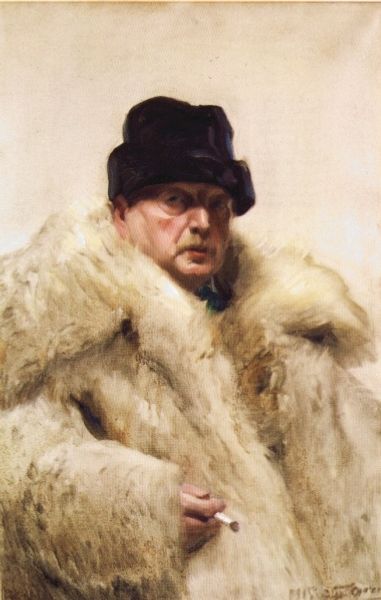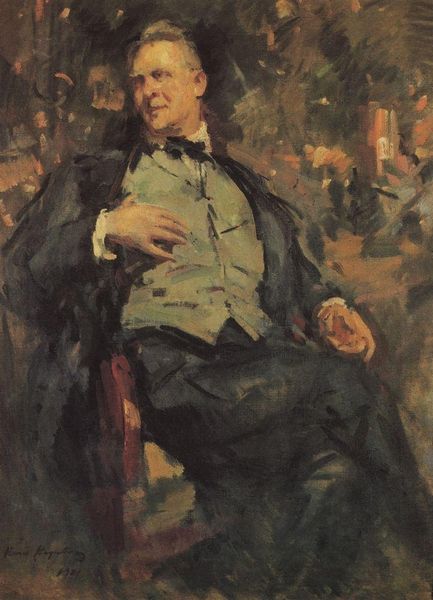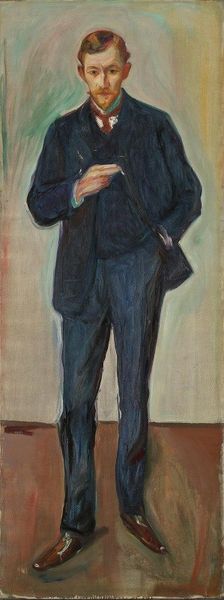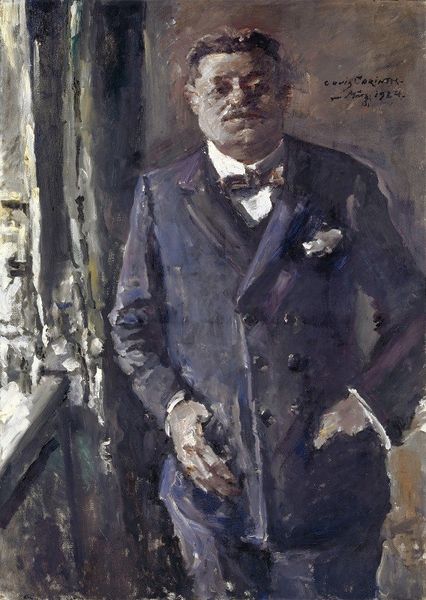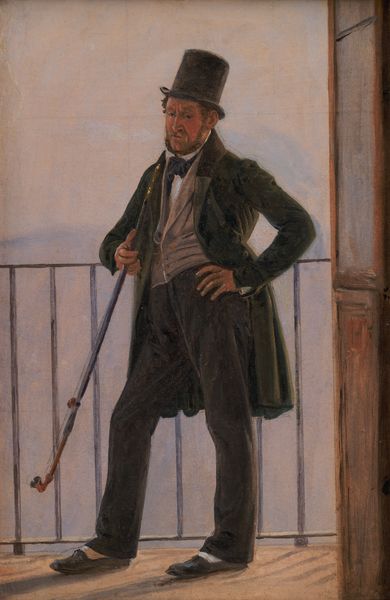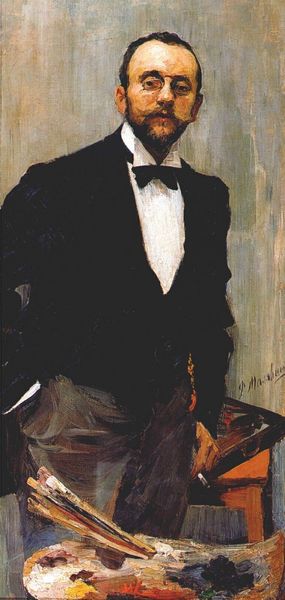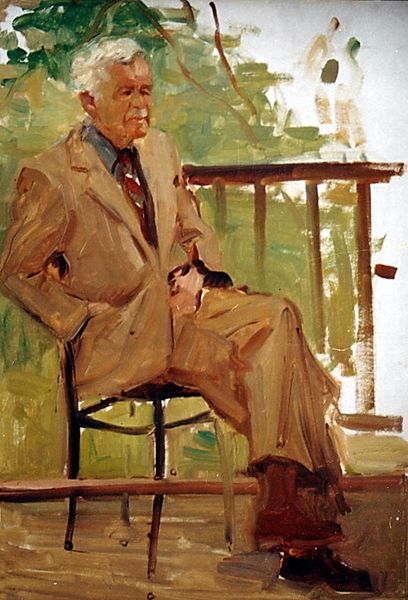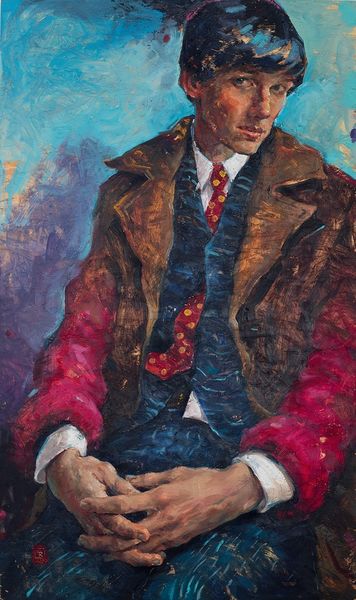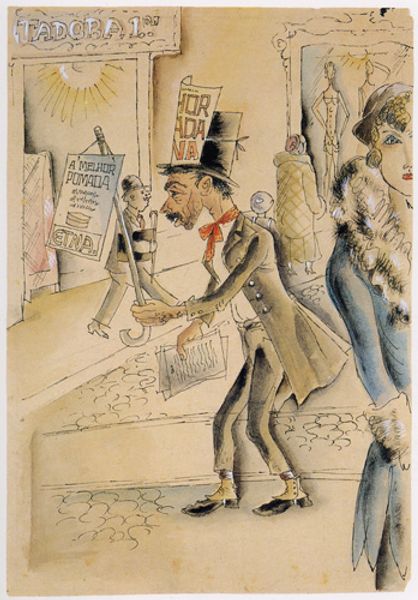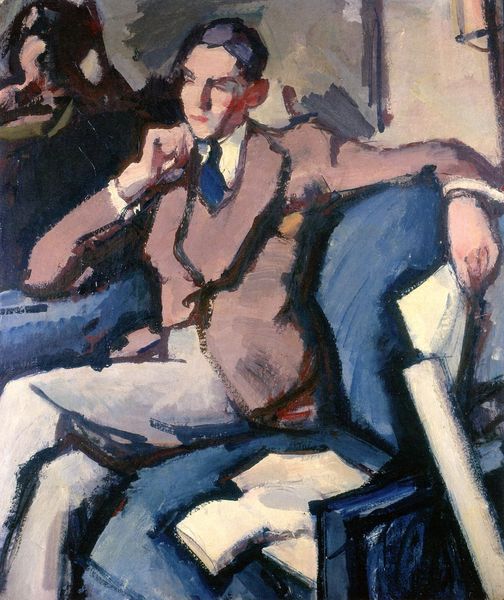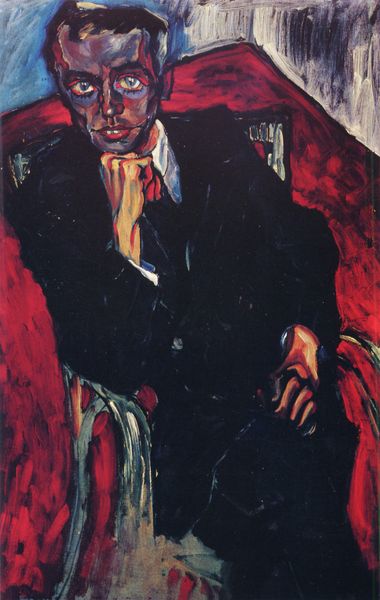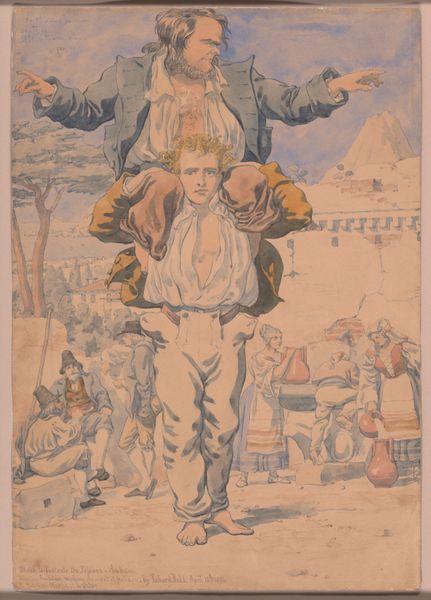
Portrait of Fyodor Chaliapin 1921
0:00
0:00
boriskustodiev
St. Petersburg State Museum of Theater and Music, Saint Petersburg, Russia
oil-paint
#
portrait
#
narrative-art
#
oil-paint
#
landscape
#
oil painting
#
famous-people
#
male-portraits
#
animal portrait
#
naive art
#
russian-avant-garde
#
cityscape
#
genre-painting
Copyright: Public domain
Curator: Boris Kustodiev painted this oil on canvas titled "Portrait of Fyodor Chaliapin" in 1921. It’s currently housed in the St. Petersburg State Museum of Theater and Music. Editor: It’s vibrant, but… somehow melancholy? The man’s expression and posture seem at odds with the bustling, festive scene behind him. Curator: Chaliapin, the renowned opera singer, is depicted during the Shrovetide festival. This work captures a pivotal moment in post-revolutionary Russia. Kustodiev, grappling with paralysis, found a symbolic vessel in Chaliapin. This was a period fraught with ideological conflict. By framing him against a folk celebration, Kustodiev explores the complexities of Russian identity during that time, a society yearning for some type of cultural anchor. Editor: Look at the symbols interwoven here. The Shrovetide festival represents the liminal space between winter and spring, a time of purging and renewal. Yet, Chaliapin's dark attire contrasts dramatically with the colorful backdrop. The dog is at his feet, a symbol of fidelity, gazing upward as if for some directive from the singer. What do these components evoke? The juxtaposition reminds me of a pre-modern world struggling to adjust to new demands and needs, all during immense societal flux. Curator: The fact that this celebrated vocalist embodies Russia and Russian culture resonates profoundly. The image acts as commentary on art and national identity during political unrest, right? We might ask what cultural touchstones will hold weight moving into the future, what do those look like for our main actor and for society, and how might a commitment to history affect decisions moving forward. Editor: The towering figure in the center suggests the artist, Chaliapin, and perhaps the opera more broadly as a symbolic cultural repository in a changing world. His figure acts as a guardian or patron looming over the joyous winterscape, a reminder of history made newly precious amid social change. The angle certainly casts the singer in this mythic role. Curator: Exactly! It's this negotiation between individual identity, art, and collectivity during revolution that makes the portrait compelling and insightful for viewers even today. Editor: Indeed. I came in seeing sadness, but leave seeing history, myth, and even hope interwoven.
Comments
No comments
Be the first to comment and join the conversation on the ultimate creative platform.
